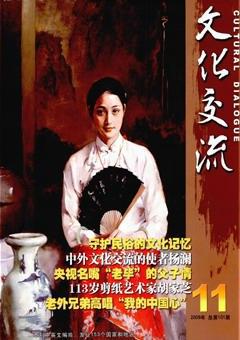Safeguarding Memories of Culture and Customs
By Zhang Ke, our staff reporter



On September 30, 2009, 22 elements of China were inscribed on the UNESCOs Representative List of the Intangible Cultural Heritage of Humanity. Four elements are associated with Zhejiang. Sericulture and silk craftsmanship of China: the application text and material were prepared by China Silk Museum in Hangzhou in conjunction with Zhejiang, Jiangsu and Sichuan provinces. Longquan celadon is Zhejiangs first cultural heritage chosen on its own by UNESCO. Paper-cut of China include the fine paper-cut of Yueqing, a city in southern Zhejiang. The art of Chinese seal engraving was submitted to UNESCO by Hangzhou-based Xiling Seal Engravers Society in conjunction with China Seal Engraving Academy.
Before the UNESCOS announcement on September 30, 2009, Zhejiang hosted the First China (Zhejiang) Expo of Intangible Cultural Heritage on September 17, which was also a key part of the ongoing First Zhejiang Culture and Art Festival.
On display were 600-odd national and provincial heritage elements from 13 provinces and municipalities.
Zhejiang hosted the first expo of intangible cultural heritage because the province leads the nation in safeguarding its cultural and folk customs. Altogether 129 elements from Zhejiang have been inscribed on the national list of cultural heritage.
Not all the exhibits were quiet and immobile on display. On the opening morning, an 80-meter-long dragon from Aojiang, Wenzhou danced on the square of the World Trade Center in Hangzhou. The 5-ton giant dragon was jointly manipulated by 230 dancers. They danced and cheered, delivering an overwhelming sense of magnificence. This grand dragon from Aojiang is one of the three dragons from Zhejiang inscribed on the national directive of cultural heritage.
The expo opened a window on a great variety of cultural wealth. In the lobby of the exhibition was a huge folding fan. The folding fan is an important element of Chinese culture. Every part of a folding fan can be a special study of art and craft. The centerpiece of the ground-floor exhibition hall was a bridal sedan. This is a representative piece of Ningbo woodcarving with red and gold paint on the national list of cultural heritage. The sedan features 318 figures in different emotions and carved in different carving styles and techniques. The sedan chair, made in three years, attracted a lot of photographers at the expo.
All these represented the characteristics of the folk culture of Zhejiang. Ding Huimin, secretary general of the Zhejiang Time-honored Brands Association, commented, “The young people find these things quite fashionable; the foreigners think these things reflect the essence of China; the old people come to see them for the sake of good old days.”
Many on display were exhibits of arts and crafts, those closely associated with everyday life. Not on display were a great number of elements such as music, dance and regional operas.
Many elements of cultural heritage in Zhejiang are in urgent need of safeguarding. The general public and the government are now aware that it is their historical responsibility to safeguard these elements of the past.
It is not so easy to protect these cultural heritages. Some customs and crafts are disappearing from cities and villages where life is changing rapidly. Diaoqiang Singing of Xinchang is kept alive by a troupe surviving on government grants. “Little Fever”, a rap singing genre in Hangzhou and a very popular entertainment in teahouses across the city once upon a time, is now on the verge of extinction. There are only three artists in the city who know how to do the singing.
The traditional design and practices for building Chinese wooden arch bridges was inscribed on the list of intangible cultural heritage in need of urgent safeguarding issued by UNESCO recently. This was jointly presented by Fujian and Zhejiang. Unfortunately, only four woodworking masters know how to build such a wood arch bridge and their ages average above 75. The technique is on the verge of extinction because there is no need to build such a bridge any more.
Another dying art is “Jiaxie” in Cangnan County in southern Zhejiang Province. It is considered the oldest dyeing art that started in the Qin (221-207BC) and Han (206BC-220AD) dynasties and reached its peak in the Tang (618-907) and Song (960-1279) dynasties. A few “Jiaxie” workshops can still be found in the mountainous outskirts of Cangnan County Wenzhou. This ancient craftsmanship is now on the verge of its extinction, with only few who knows the secrets behind the uniquely pristine elegance of these blue cloths.
In safeguarding the precious heritage, the government should play a leading role and the general public should take an active part. Putting the elements of the past on various lists is just a means. Keeping them alive and carrying them into the future is the end.□

